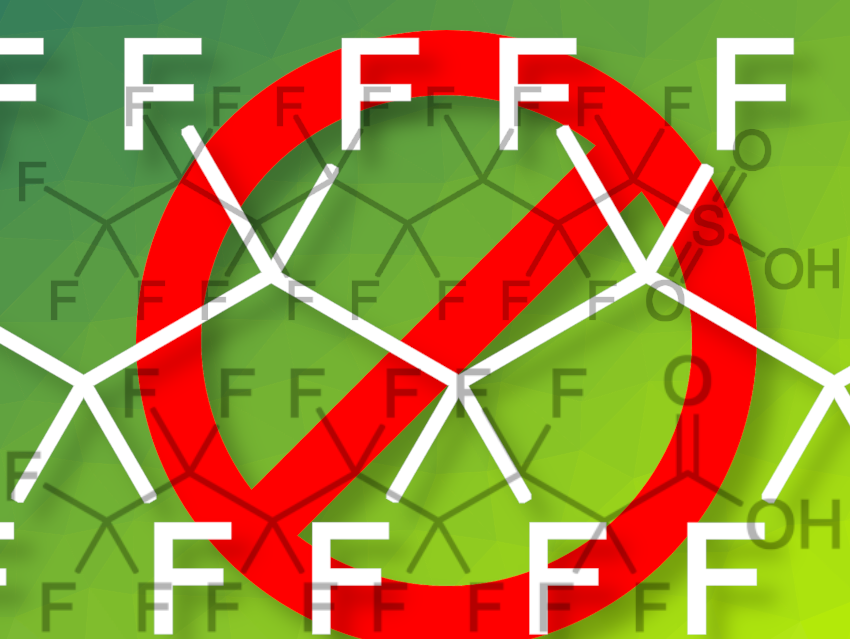The European Chemicals Agency (ECHA) presents a proposal submitted by five EU Member States to ban the production and use of per- and polyfluoroalkyl substances (PFASs) [1,2]. It proposes to ban all PFASs with transition periods ranging from 18 months to 12 years, depending on the availability and suitability of PFAS alternatives. If adopted by the EU Commission, alternatives would have to be found for approximately 10,000 applications, which would be a first, as previous restrictions only applied to individual substances.
What Are PFASs? Why Should They Be Banned?
PFASs are thousands of substances that are water-, dirt-, and/or oil-repellent, making them useful components in countless everyday products such as waterproof clothing, coated pans, cosmetics, fast food packaging, or flame retardants. In recent decades, concerns have arisen about the use of PFAS-containing products. They are hardly degraded in the natural environment and, therefore, accumulate in water and soil [3] and are transported over large distances by air. High concentrations have been found, for example, in Arctic regions with seemingly pure air in seals and polar bears.
Perfluorocarboxylic acids and perfluorosulfonic acids are among the most stable chemicals we know. Other PFASs are transformed into these. Many PFASs bioaccumulate, meaning they accumulate in food chains, resulting in high concentrations in animals starting from low concentrations in the environment.Because PFASs have very long biological half-lives, for example, a molecule of perfluorooctanoic acid (PFOA) remains in the human body for about a year after it is taken up.
PFASs negatively affect many important life processes, including the immune system and endocrine system. For some compounds, it has been proven that they can have health effects even at low concentrations.
Current Situation and Outlook
So far, there are only restrictions for individual PFASs. For example, the use of PFOA is banned in the EU and the use of perfluorooctane sulfonic acid (PFOS) is only allowed for a few applications in the EU. The risks from the production and use of most PFASs have not yet been controlled.
Now, ECHA’s scientific committees for Risk Assessment (RAC) and for Socio-Economic Analysis (SEAC) will check that the proposal meets the legal requirements of REACH in their meetings in March 2023 [1]. If it does, the committees will begin their scientific evaluation of the proposal. A six-month consultation is planned to start on March 22, 2023. Subsequently, the EU Commission decides together with the EU Member States on legally binding production and usage restrictions.
So far, it has not been communicated what will be seen as substitution strategies for the application areas of PFASs.
References
[1] European Chemicals Agency (ECHA), Registry of restriction intentions: Per- and polyfluoroalkyl substances (PFAS) (accessed February 7, 2023)
[2] European Chemicals Agency (ECHA), ECHA publishes PFAS restriction proposal, Press Release ECHA/NR/23/04, February 7, 2023. (accessed February 7, 2023)
[3] Marina G. Evich, Mary J. B. Davis, James P. McCord, Brad Acrey, Jill A. Awkerman, Detlef R. U. Knappe, Andrew B. Lindstrom, Thomas F. Speth, Caroline Tebes-Stevens, Mark J. Strynar, Zhanyun Wang, Eric J. Weber, W. Matthew Henderson, John W. Washington, Per- and polyfluoroalkyl substances in the environment, Science 2022. https://doi.org/10.1126/science.abg9065




